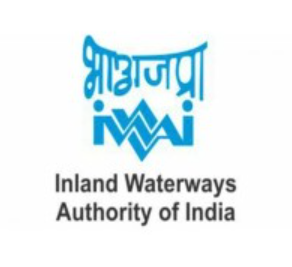Inland Waterways Authority of India
The Inland Waterways Authority of India (IWAI) is a statutory body under the Ministry of Ports, Shipping and Waterways, Government of India. It was established in 1986 through the Inland Waterways Authority of India Act, 1985, with the primary objective of developing and regulating India’s inland waterways for shipping and navigation.
History and Establishment
India has a vast network of inland waterways, comprising rivers, canals, backwaters, and creeks. However, the potential of these waterways for transportation remained largely untapped due to various challenges such as inadequate infrastructure, lack of maintenance, and limited navigational aids. Recognizing the need to develop inland water transport as an eco-friendly and cost-effective mode of transportation, the Government of India enacted the Inland Waterways Authority of India Act in 1985, which led to the establishment of IWAI in 1986.
Functions and Responsibilities
The primary functions and responsibilities of IWAI include:
- Developing and maintaining India’s inland waterways for shipping and navigation
- Conducting surveys and investigations to assess the navigability of waterways
- Providing infrastructure facilities such as terminals, navigation aids, and cargo handling equipment
- Regulating and promoting inland water transport services
- Encouraging private sector participation in the development and operation of inland waterways
- Collaborating with state governments and other stakeholders for the integrated development of inland water transport
- Representing India in international forums related to inland waterways
National Waterways
The IWAI is responsible for the development and management of India’s national waterways. As of 2021, there are 111 declared national waterways in India, covering a total length of approximately 20,000 kilometers. Some of the key national waterways include:
- National Waterway 1 (NW-1): Ganga-Bhagirathi-Hooghly River System from Allahabad to Haldia (1,620 km)
- National Waterway 2 (NW-2): Brahmaputra River from Dhubri to Sadiya (891 km)
- National Waterway 3 (NW-3): West Coast Canal from Kottapuram to Kollam (205 km)
- National Waterway 4 (NW-4): Kakinada-Puducherry Canal System (1,095 km)
- National Waterway 5 (NW-5): East Coast Canal with Brahmani and Mahanadi delta rivers (623 km)
Infrastructure Development
IWAI is actively engaged in the development of infrastructure facilities along the national waterways to promote inland water transport. This includes the construction of terminals, jetties, and navigation locks, as well as the provision of navigational aids such as channel marking, night navigation facilities, and river information systems. IWAI has also been working on the development of multimodal terminals to facilitate the seamless integration of inland waterways with other modes of transport, such as roads and railways.
Jal Marg Vikas Project
One of the flagship projects of IWAI is the Jal Marg Vikas Project (JMVP), which aims to develop the NW-1 (Ganga-Bhagirathi-Hooghly River System) for navigation. The project, which is being implemented with technical and financial assistance from the World Bank, involves the construction of multimodal terminals, navigational locks, and river information systems, as well as the maintenance of a minimum depth of 2.5 to 3 meters throughout the stretch. The JMVP is expected to significantly enhance the cargo-carrying capacity of NW-1 and promote the use of inland waterways for the transportation of goods.
Promotion of Inland Water Transport
IWAI has been actively promoting inland water transport as an eco-friendly, cost-effective, and sustainable mode of transportation. It has undertaken various initiatives to encourage the use of inland waterways, such as:
- Conducting feasibility studies and market research to identify potential routes and commodities for inland water transport
- Providing incentives and subsidies to vessel operators and cargo owners to promote the use of inland waterways
- Organizing workshops, seminars, and exhibitions to create awareness about the benefits of inland water transport
- Collaborating with educational institutions and research organizations to develop human resources and promote innovation in the sector
International Cooperation
IWAI actively participates in international forums and collaborates with other countries to promote the development of inland waterways and share best practices. It is a member of the International Association of Ports and Harbors (IAPH) and the Permanent International Association of Navigation Congresses (PIANC). IWAI has also signed memoranda of understanding (MoUs) with various countries, such as Bangladesh, Myanmar, and Nepal, for cooperation in the field of inland water transport and the development of transboundary waterways.
Challenges and Way Forward
Despite the significant potential of inland waterways in India, the sector faces several challenges, such as:
- Limited infrastructure and navigational facilities along the waterways
- Inadequate depth and width of the channels for navigation
- Seasonal variations in water levels, affecting the navigability of waterways
- Limited private sector participation and investment in the sector
- Lack of awareness about the benefits of inland water transport among stakeholders
To address these challenges, IWAI has been working on various initiatives, such as the development of infrastructure facilities, the promotion of private sector participation, and the creation of a conducive policy environment for the growth of inland water transport. With the government’s increasing focus on the development of inland waterways and the implementation of projects like the Jal Marg Vikas Project, the sector is expected to witness significant growth in the coming years.


